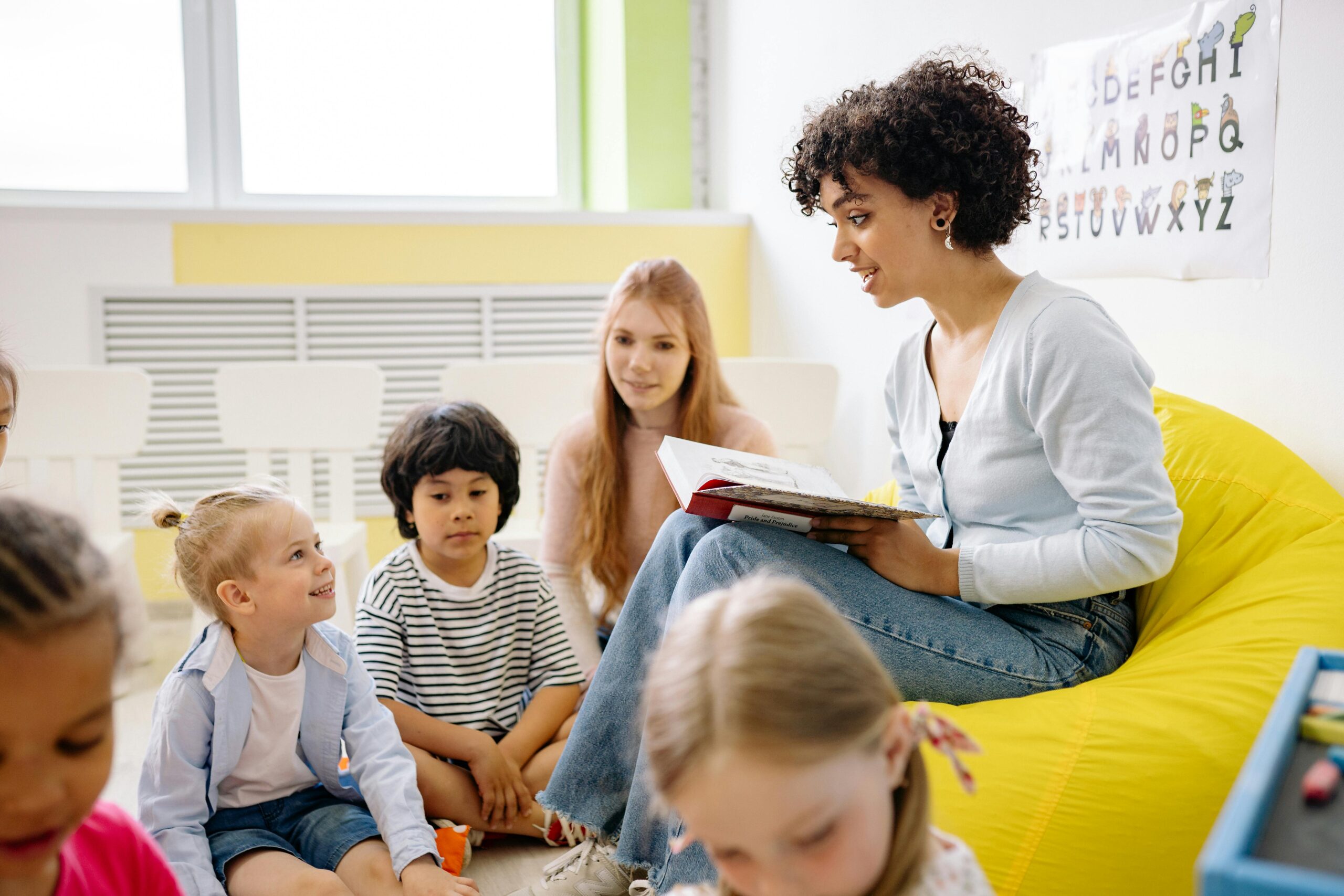
Reading is a foundational skill that serves as a gateway to personal and educational development. It is not merely a practical ability but a critical element in facilitating cognitive growth, language acquisition, and the capacity to access and process information. Reading opens up entire worlds of knowledge, imagination, and understanding, allowing individuals to partake in the vast stores of human culture and communication.
When your child reads to learn, they experience:
Cognitive Advantages: Engaging with text enhances mental faculties like memory, analytical thinking, and focus. Regular reading contributes to the development of neural networks that can lead to improved intelligence and academic performance.
Language Skills: Through reading, individuals gain exposure to an extensive vocabulary, grammatical structures, and varied writing styles, which in turn improve communication abilities.
Knowledge Access: Reading is the key to unlocking vast repositories of knowledge in almost every field of study or interest, facilitating lifelong learning.
Empathy and Emotional Intelligence: Literature allows readers to experience a multitude of perspectives, fostering empathy and emotional understanding.
Entertainment and Relaxation: Beyond its educational value, reading is a source of immense pleasure and a way to unwind from daily stressors.
Understanding Multisensory Learning
Multisensory learning is an educational approach that incorporates two or more of the body’s senses in the learning process. This approach is grounded in the understanding that the more pathways by which we can receive and process information in the brain, the stronger our ability to retain and recall that information. By stimulating visual, auditory, kinesthetic, and tactile systems simultaneously, multisensory learning creates a more enriched learning experience, facilitating stronger neural connections and enhancing memory retention.
The Value of Sensory Engagement in Reading Instruction

1- Cognitive Synchronization
When learning to read, the synchronization of multiple cognitive processes is vital. This synchronization can be effectively achieved through multisensory learning, which merges visual recognition of text with the auditory perception of spoken language, along with the tactile and kinesthetic experiences of writing or manipulating letters. This multifaceted approach not only aids in the alignment of these processes but also caters to the varied sensory preferences of learners, ensuring that all students have the opportunity to engage with the material in a way that best suits their learning style.
2- Enhanced Memory and Recall
The use of multisensory learning in reading instruction can significantly improve students’ abilities to remember and retrieve information. By engaging multiple senses, the brain is given several ways to encode and store the information being learned. For example, associating the sight of a word with the sound it makes and the action of writing it can deeply engrain that word in memory. This process is known as multimodal encoding, and it leads to more robust, long-lasting learning outcomes.

3- Solidifying Phonics and Phonemic Awareness
Phonics instruction, which is the relationship between letters and sounds, is particularly well-suited to a multisensory approach. By allowing students to see, hear, touch, and move with the content, multisensory techniques make abstract letter-sound relationships concrete and therefore easier to understand. For example, a student might learn the sound of the letter “b” by looking at the letter, saying its sound aloud, tracing it with their fingers, and jumping when they hear it in a word. This full-body engagement can help solidify these fundamental reading skills.

4- Inclusive Education
In diverse classrooms, students’ learning abilities and styles vary widely. Multisensory learning opens the doors to literacy for all students, including those with learning disabilities like dyslexia. The multisensory approach bypasses the reliance on a single sensory mode of learning, offering alternative pathways for comprehension and skill development. This inclusive strategy can help reduce the achievement gap by catering to the individual needs of each student.
5- Mitigating Frustration and Encouraging Persistence
Reading can be challenging, particularly for those struggling with dyslexia or other learning difficulties. Multisensory learning not only aids in overcoming these challenges but also helps mitigate frustration by offering varied, engaging methods. Students are less likely to feel overwhelmed when they have multiple ways to connect with the material. Moreover, by presenting reading through various enjoyable activities, teachers can encourage persistence and resilience in their students.
Theoretical Basis for the Multisensory Approach
Understanding Multisensory Integration
Multisensory integration is a scientific concept that explains how the human brain processes and combines information from different sensory modalities. This process is fundamental to the multisensory approach to reading, grounded in the work of educational psychologists and neuroscientists. The theory posits that when multiple senses are stimulated simultaneously, the brain’s capacity to make meaningful connections between abstract concepts, like the symbols that make up written language, and sensory experiences is enhanced.
Neural Plasticity and Learning
Neural plasticity, the brain’s ability to adapt and reorganize itself by forming new neural connections, plays a critical role in multisensory learning. This adaptability is particularly potent during early childhood, making multisensory approaches highly effective for young learners. However, this plasticity persists throughout life, so learners of all ages can benefit from multisensory methods.
Cognitive Load Theory
Cognitive load theory, which examines the amount of mental effort being used in the working memory, supports the idea that learning is more efficient when cognitive load is balanced across multiple sensory inputs. By distributing the cognitive load, the multisensory approach prevents overload in any single sensory channel, enabling learners to process information more efficiently.
Benefits of Multisensory Reading Activities
Multisensory reading activities offer a variety of advantages that cater to the different needs of learners. These benefits encompass improvements in information retention, heightened learner motivation, and the accommodation of varying learning preferences. Let’s explore these benefits in more detail:
Improved Retention and Recall
Multi-Channel Encoding: The human brain encodes information more effectively when it is presented through various sensory channels. By engaging different senses, multisensory reading activities allow for multiple, simultaneous encoding processes, thus enhancing the likelihood of information being stored in long-term memory. For example, when students engage with reading materials through both visual and tactile experiences, such as reading about shapes while handling physical objects, the information is more readily encoded and later retrieved with greater ease.
Context-Rich Learning: Providing a rich, sensory learning environment helps to create context around the reading material. The brain is particularly adept at remembering information that is associated with specific contexts, such as a distinctive smell or the texture of a material. When learners can associate the sensory experience with the reading content, they can recall the information more quickly and accurately.
Enhanced Motivation and Engagement
Interactive Experience: Interactive elements in reading activities can transform the learning process from passive to active, encouraging learners to participate fully. A hands-on approach to reading can turn a routine lesson into an engaging and enjoyable experience. For instance, building letter shapes with clay or using sign language to reinforce phonics can bring an element of play and exploration to reading, which fosters enthusiasm and a desire to engage with the learning material.
Positive Feedback Loop: Successfully engaging with multisensory activities can create a positive feedback loop that propels motivation. When learners perceive their interactions as enjoyable and successful, it reinforces their willingness to engage in the activity and invest effort into learning to read. This heightened motivation can lead to improved concentration and a proactive attitude towards reading sessions.
Supporting Diverse Learning Styles
Customizable Learning Paths: Multisensory reading activities allow for customization to fit the needs of different learning styles. For the visual learner, infographics and colorful diagrams may be most effective. Auditory learners might excel with rhythmic recitations and listening to stories, while kinesthetic learners can benefit from hands-on activities, such as arranging letter tiles to form words. By offering a variety of learning paths, multisensory methods ensure that each student can engage with reading in the most effective way for them.
Inclusive Approach: The inclusive nature of multisensory activities ensures that learners with different capabilities and preferences have equal opportunities to succeed. For instance, for students with dyslexia, a multisensory approach can be particularly helpful as it bypasses sole reliance on visual reading strategies, which may be challenging for these learners. The tactile experience of feeling letter shapes or the kinesthetic activity of moving to represent a story can provide alternative, and often more compatible, modes of learning.
The profound benefits of multisensory reading activities can significantly improve the reading experience for learners. By engaging multiple senses, these activities facilitate better retention and recall, enhance motivation and engagement, and support diverse learning styles, ultimately leading to a more inclusive and effective reading education.
Implementing Multisensory Activities to Teach Reading Skills
The introduction of multisensory activities into reading instruction is not just a creative alternative to traditional teaching methods; it’s a practical necessity for addressing the diverse needs of today’s learners. To successfully implement these activities, educators must thoughtfully integrate a range of practical examples and strategies that cater to varied sensory preferences. Below are some specific approaches to creating a rich, multisensory learning environment, and tips for ensuring that it is inclusive for all students.
Creating a Comprehensive Lesson Plan with Multisensory Strategies
When incorporating multisensory strategies into your lesson plans, it’s important to follow a structured approach that ensures all sensory channels are engaged to support diverse learning needs. Here’s a step-by-step guide to help you incorporate multisensory strategies effectively:
Identify Learning Objectives: Clearly define what you want your students to learn in the reading lesson. Determine the reading skills you aim to develop, whether it’s phonemic awareness, vocabulary expansion, or comprehension.
Assess Student Preferences: Understand each student’s learning style and preferences through observation and assessment tools. This information will be crucial for tailoring the multisensory activities to individual needs.
Choose Relevant Content: Select reading materials that are age-appropriate and engaging for your students. Ensure the content lends itself well to multisensory exploration, such as texts with rich descriptive language for visualization exercises.
Plan Sensory Activities: Design activities that address visual, auditory, kinesthetic, and tactile learning channels. For example, use textured flashcards for tactile learners, sound recordings for auditory learners, and movement exercises for kinesthetic learners.
Integrate Technology: Consider using apps and interactive digital resources that can provide multisensory stimulation, like read-along programs with highlighted text and audio, or games that require touch interaction.
Scaffold Instruction: Start with activities that provide a high level of sensory support and gradually reduce the scaffolding as students become more confident and proficient in their reading skills.
Monitor and Modify: Continuously assess the effectiveness of your multisensory strategies and be prepared to make adjustments. Pay close attention to student feedback and engagement levels.
Reflect and Document: After the lesson, reflect on what worked well and what could be improved. Keep detailed records of activities and student progress, which will inform future lesson planning.

Practical Examples of Multisensory Reading Activities
Interactive Story Maps: Story maps are visual representations of the sequence of events in a narrative. By creating a tactile story map, students can physically move characters or objects along the map while they narrate the story elements. This engages visual, tactile, and kinesthetic senses and aids in comprehension of the story structure.
Phonics Through Art: Incorporate art projects where students draw or paint a picture that represents a specific phoneme or word. As they work on their art, have them repeatedly say the sound or word, reinforcing the auditory element of the phoneme and its visual association.
Scented Letters: Using scented markers, children can draw or trace letters and then smell them. This peculiar but effective strategy helps link the shape of the letter with a particular scent, activating both the olfactory and visual pathways to enhance memory.
Texture Writing: Have students practice writing letters and words in a tray filled with materials like sand, rice, or shaving cream. The tactile experience helps to solidify the motor patterns necessary for writing while also engaging the sense of touch.
Sound Matching Games: Create a game where students match objects or pictures with their corresponding sounds. Hearing the sound and then physically matching it to the correct item integrates auditory and kinesthetic learning.
Cooking and Reading: Combining cooking with reading recipes can be an engaging multisensory activity. By reading the recipe, measuring ingredients, and feeling the textures, students engage multiple senses which enrich the learning process.
Gardening and Vocabulary:
Planting a garden can help students learn new vocabulary. As they engage with the soil, seeds, and plants, discuss relevant vocabulary words, and have them label parts of the plants or steps in the gardening process.
Adapting Strategies for Individual Student Needs
To ensure that multisensory reading strategies effectively meet the diverse needs of individual students, consider the following adaptations:
Flexibility in Activity Choice: Offer students a menu of multisensory activities to choose from. This allows them to have control over their learning process and engage in activities that align with their sensory preferences.
Personalized Pacing: Some students may need more time with certain multisensory activities than others. Allow them to work at their own pace to fully grasp the material.
Pairing and Grouping: Pair or group students with differing strengths so they can support each other during multisensory activities. This peer learning can help reinforce concepts and accommodate varied learning needs.
Environmental Adjustments: Change the classroom layout or environment to accommodate sensory needs. For example, provide a quiet corner for students who are easily distracted by noise during auditory activities.
Multimodal Feedback: Provide feedback in various forms, such as verbal, visual, or even through gestures. This ensures that students receive reinforcement in a way that resonates best with them.
Continuous Assessment: Use a variety of assessment tools to gauge student progress across different sensory modalities. This will give you a comprehensive understanding of their development and areas needing attention.
The use of multisensory strategies in teaching reading should be seen as an evolving process that requires educators to be observant, responsive, and creative in meeting the needs of their students. By taking a personalized and dynamic approach, teachers can foster an inclusive learning environment that empowers all students to succeed in reading.
Enhancing Reading Comprehension Through Multisensory Strategies
Reading comprehension is a multifaceted process that requires a reader to not only decode text but also derive meaning and apply it within various contexts. Multisensory strategies work to create a more immersive and tangible reading experience, which aids in deepening comprehension and solidifying retention.
Interactive Methods for Meaningful Learning
Interactive learning strategies can make reading sessions more engaging and memorable. These strategies include:
Text-based Discussions: Cultivating an environment where students discuss what they’ve read can stimulate critical thinking and improve comprehension. It allows students to articulate their thoughts and questions about the text, building a deeper understanding.
Storytelling and Role-Playing: When students can act out the narrative or retell the story in their own words, they are actively processing the information and making it their own.
Reading and Writing Connections: Encouraging students to write summaries or their own continuations of stories they read can help solidify their grasp on the material.
Problem-Solving Activities: Using the content as a basis for problem-solving activities enables students to apply what they’ve read to real-world situations, thereby improving comprehension and recall.
By interweaving the senses, educators can create a dynamic learning environment that not only caters to various learning styles but also enhances cognitive development, phonemic awareness, and inclusive education. Moreover, by reducing frustration and increasing persistence, multisensory strategies foster a positive learning experience, conducive to academic and personal growth.
FAQ’s
How do multisensory activities enhance the process of teaching reading skills?
Multisensory activities enrich the teaching of reading skills by engaging various sensory pathways, which in turn stimulates whole-brain involvement for better information retention. These activities cater to diverse learning styles, making the learning process more inclusive and enjoyable for students, including those with learning differences.
What are the benefits of a multisensory approach to reading comprehension strategies?
A multisensory approach to reading comprehension strategies benefits students by providing multiple ways to encode and store information, creating richer learning experiences that foster stronger neural connections and enhance memory retention. It also allows students to experience reading in ways that suit their individual learning styles.
Can multisensory reading techniques improve motivation and learning in students?
Yes, multisensory reading techniques can significantly improve motivation and learning in students by making the learning experience more dynamic, interactive, and enjoyable. This often results in increased student engagement and willingness to persist in learning new reading skills.
How do multisensory reading strategies support learners with different preferences and needs?
Multisensory reading strategies support learners with different preferences and needs by offering a range of sensory experiences, such as visual aids, auditory engagement, kinesthetic activities, and tactile experiences. This inclusive approach ensures that all students have equal opportunities to learn and succeed in reading.
What makes multisensory strategies for reading effective for students with dyslexia?
Multisensory strategies for reading are particularly effective for students with dyslexia because they provide alternative pathways for learning that do not rely solely on visual or auditory processing. Engaging touch, movement, and other senses helps students with dyslexia understand and differentiate between sounds, which is crucial for developing reading skills.
How Can I Use The Power of Multisensory Learning Strategies To Help Kids Read Better?
Unlock the full potential of your child’s reading and comprehension skills with Readability Tutor – your personal AI-guided learning companion for grades K-6. Immerse your young reader in a multisensory educational journey and witness the transformative power of customized, interactive experiences. With our innovative IVQA™ technology, children engage in a unique 1-on-1 tutoring experience that adapts to their learning pace, enhancing their vocabulary, and advancing critical thinking.
Dive into the multisensory learning strategies recommended in our article, and enhance your child’s cognitive synchronization, memory recall, and phonemic awareness. Embrace the diverse learning needs of your child by providing them with the Readability Tutor app that accommodates all learning styles, creating a supportive and inclusive reading environment.
Don’t let your child’s learning potential go untapped. Choose Readability Tutor for an engaging, effective, and enjoyable reading experience that goes beyond traditional teaching methods. Experience the joy of watching your child develop into a confident reader with a lifelong love for learning.
Join Readability Tutor now, and embark on a path to reading success with our AI-driven, multisensory approach. Enjoy peace of mind with regular progress reports and watch your child thrive. Start your child’s personalized reading adventure today!Engaging Multisensory Reading Strategies

 Español
Español